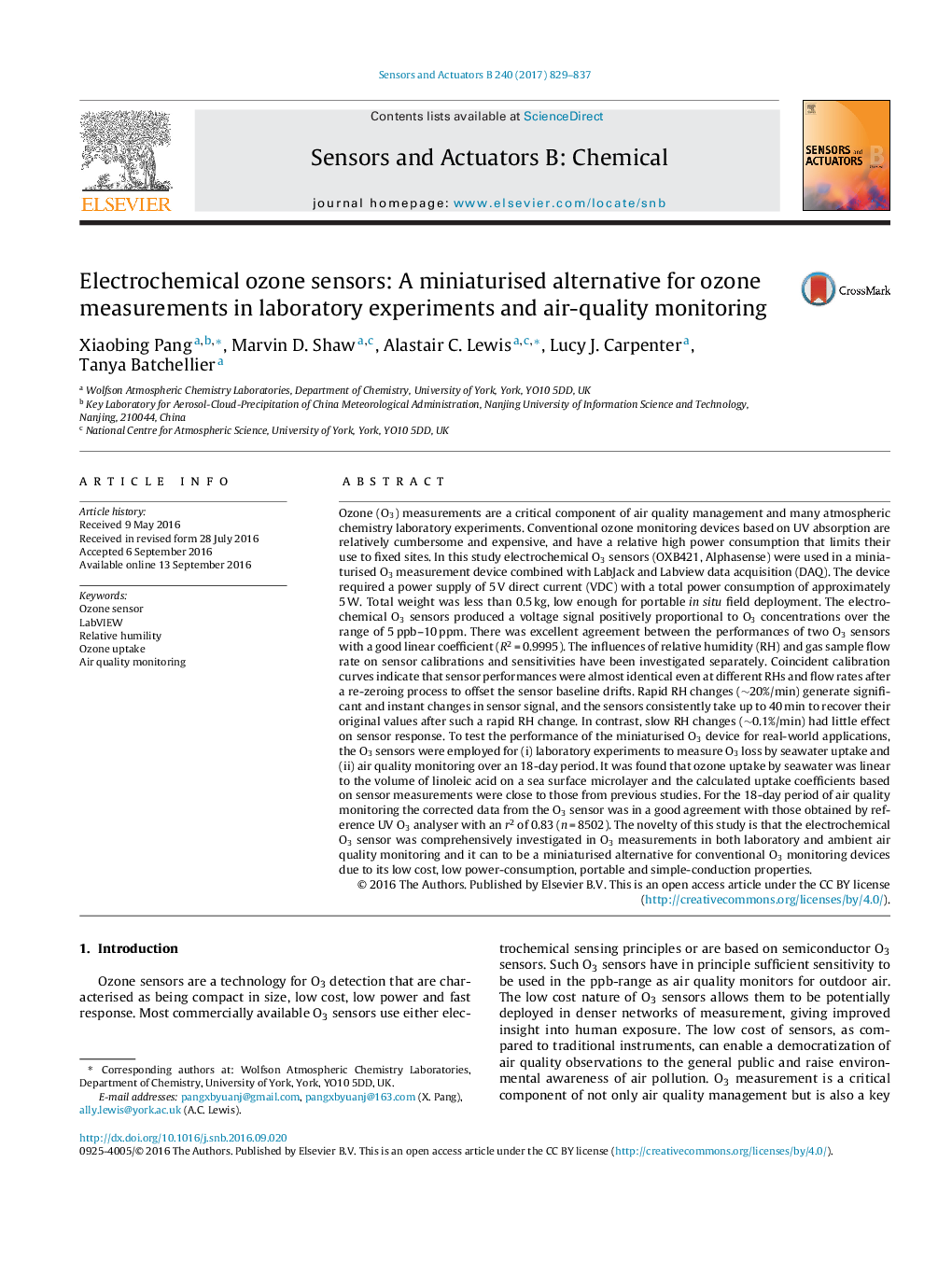| کد مقاله | کد نشریه | سال انتشار | مقاله انگلیسی | نسخه تمام متن |
|---|---|---|---|---|
| 5009641 | 1462051 | 2017 | 9 صفحه PDF | دانلود رایگان |
- O3 sensors were employed in the development of a miniaturised O3 measurement device combined with LabJack and Labview data acquisition.
- The O3 sensor device was firstly applied in the laboratory experiment and also in air quality monitoring.
- The influences relative humidity and gas flow rate on sensor signals were investigated independently.
Ozone (O3) measurements are a critical component of air quality management and many atmospheric chemistry laboratory experiments. Conventional ozone monitoring devices based on UV absorption are relatively cumbersome and expensive, and have a relative high power consumption that limits their use to fixed sites. In this study electrochemical O3 sensors (OXB421, Alphasense) were used in a miniaturised O3 measurement device combined with LabJack and Labview data acquisition (DAQ). The device required a power supply of 5 V direct current (VDC) with a total power consumption of approximately 5 W. Total weight was less than 0.5 kg, low enough for portable in situ field deployment. The electrochemical O3 sensors produced a voltage signal positively proportional to O3 concentrations over the range of 5 ppb-10 ppm. There was excellent agreement between the performances of two O3 sensors with a good linear coefficient (R2 = 0.9995). The influences of relative humidity (RH) and gas sample flow rate on sensor calibrations and sensitivities have been investigated separately. Coincident calibration curves indicate that sensor performances were almost identical even at different RHs and flow rates after a re-zeroing process to offset the sensor baseline drifts. Rapid RH changes (â¼20%/min) generate significant and instant changes in sensor signal, and the sensors consistently take up to 40 min to recover their original values after such a rapid RH change. In contrast, slow RH changes (â¼0.1%/min) had little effect on sensor response. To test the performance of the miniaturised O3 device for real-world applications, the O3 sensors were employed for (i) laboratory experiments to measure O3 loss by seawater uptake and (ii) air quality monitoring over an 18-day period. It was found that ozone uptake by seawater was linear to the volume of linoleic acid on a sea surface microlayer and the calculated uptake coefficients based on sensor measurements were close to those from previous studies. For the 18-day period of air quality monitoring the corrected data from the O3 sensor was in a good agreement with those obtained by reference UV O3 analyser with an r2 of 0.83 (n = 8502). The novelty of this study is that the electrochemical O3 sensor was comprehensively investigated in O3 measurements in both laboratory and ambient air quality monitoring and it can to be a miniaturised alternative for conventional O3 monitoring devices due to its low cost, low power-consumption, portable and simple-conduction properties.
225
Journal: Sensors and Actuators B: Chemical - Volume 240, March 2017, Pages 829-837
